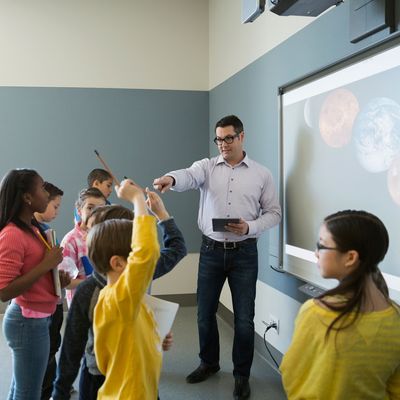
For most kids, the average school day can be broken down into chunks of movement and sitting still. Recess: Time to run around. Gym class: Ditto. All other classes: Feet on the floor, butt in the chair, and please, try not to fidget too much. It’s distracting.
But as the New York Times explains today, a growing number of education experts are arguing that the typical system is too siloed. Kids should really be moving constantly, even — especially — when they’re learning.
It’s not just for the health benefits, either: A more active student, the thinking goes, is also a better student. “Kids aren’t meant to sit still all day and take in information,” Steve Boyle, a co-founder of the National Association of Physical Literacy, told the Times. His organization has developed a collection of short videos, or “BrainErgizers,” that lead kids through quick bursts of physical activity — providing opportunities to “breathe, relax, recharge, and refocus,” as the NAPL website puts it. According to the Times, the videos have been used in classrooms and Boys & Girls Clubs in 15 different states.
Research suggests they may be on to something. As Science of Us has previously noted, exercise can act as a memory boost. And a study published last year in Pediatrics found that allowing time for physical activity during lessons helped elementary-school students to do better in both math and language lessons; on average, those in the movement group were roughly four months ahead of the control group in their learning by the end of the two-year experiment.
Those activity bursts don’t have to take time away from class, either: In a 2015 Washington Post column, Aleta Margolis, director of the Center for Inspired Teaching, explained that, with a little creativity, movement can be incorporated directly into teaching: “When students time each other running for 30 seconds, they get to practice using basic time measurements,” she wrote. “Vigorously shaking a container of cream to create butter teaches students about the difficult realities of frontier life and also about the science of their own bodies, about lactic acid and what happens when muscles are used too hard for too long.” There’s something in it for everyone, too: The kids get a sort-of second recess and a lesson that’s more fun than the average lecture or worksheet. For both those reasons, the teachers get a group of more attentive kids.




